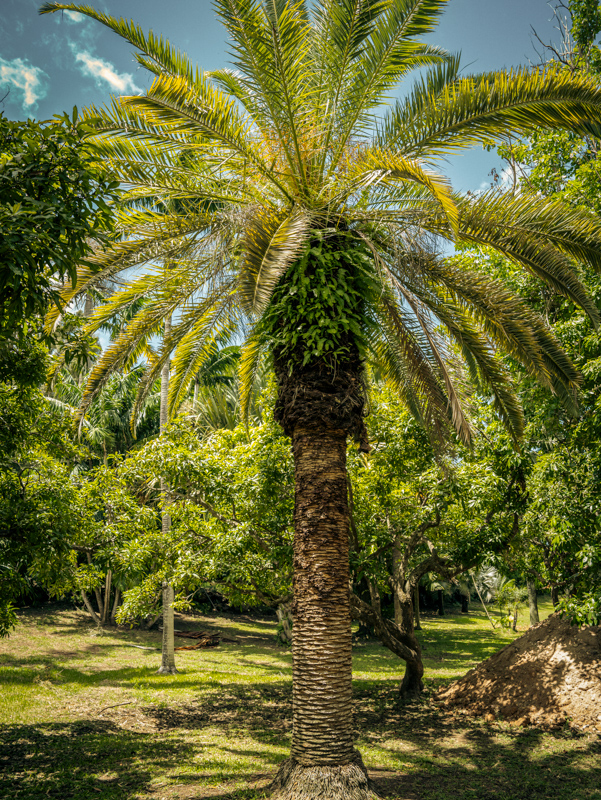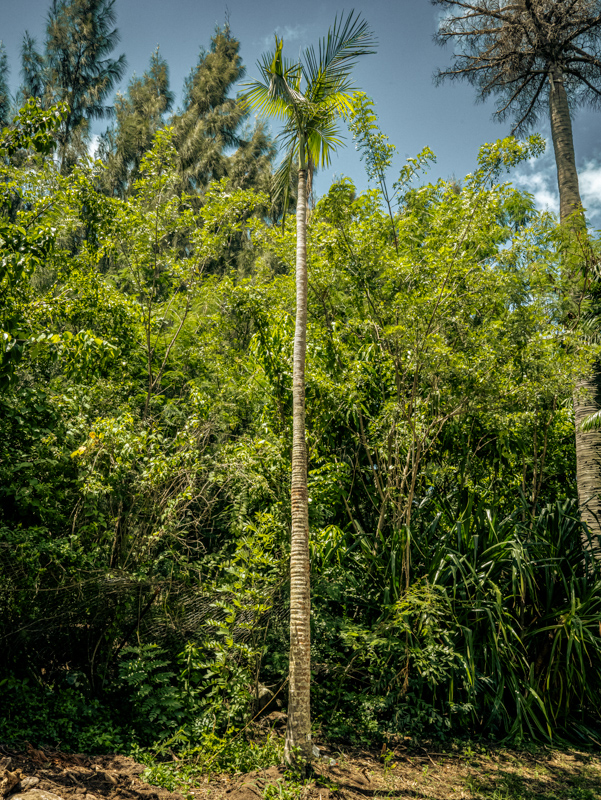Acoelorraphe wrightii, commonly known as the Paurotis Palm, Everglades Palm, or Silver Saw Palmetto, is native to the wetlands and coastal areas of Florida, the Caribbean, and Central America. It is valued for its adaptability to wet conditions and has a variety of uses, particularly in landscaping, conservation, and traditional applications:
- Ornamental Landscaping: The Paurotis Palm is highly prized for its clumping growth habit and attractive fan-shaped leaves, which have a silvery-green color on the underside. It is commonly used in tropical and subtropical landscapes, especially in wetlands, coastal areas, and water gardens. Its tolerance for flooded conditions makes it ideal for swampy or marshy settings, adding a lush, natural aesthetic to landscapes.
- Wetland Restoration and Conservation: Due to its ability to thrive in waterlogged soils and its extensive root system, Acoelorraphe wrightii is often used in wetland restoration projects. It helps stabilize soil in flood-prone areas and plays a role in erosion control, making it valuable for conserving and rehabilitating fragile ecosystems.
- Habitat for Wildlife: The Paurotis Palm provides important habitat and food for a variety of wildlife species. Its fruits are eaten by birds and small mammals, while the dense foliage offers shelter and nesting sites for birds, insects, and other animals. By supporting biodiversity, this palm contributes to the ecological health of wetland areas.
- Cultural and Traditional Uses: In certain regions, the fronds of Acoelorraphe wrightii have been used in traditional crafts such as weaving baskets, mats, and thatch roofs. These items are both functional and part of cultural heritage, reflecting traditional techniques and providing income for local artisans.
- Soil Stabilization and Erosion Control: The extensive, fibrous root system of the Paurotis Palm helps to stabilize soils in coastal and wetland areas, preventing erosion and helping to maintain the integrity of shorelines and riverbanks. This makes it a valuable species for land conservation and coastal protection projects.
- Tolerant of Salt and Flooding: Acoelorraphe wrightii is particularly tolerant of saline environments and standing water, making it suitable for coastal landscapes and areas with periodic flooding. Its resilience in these conditions makes it ideal for planting in areas where other plants might struggle, particularly along estuaries, mangroves, and coastal marshes.
- Drought Tolerance: While it thrives in wet conditions, the Paurotis Palm can also withstand periods of drought once established, providing versatility for landscapes with variable water availability. This resilience adds to its popularity as a low-maintenance plant in subtropical gardens.
Natural Windbreaks and Privacy Screens: Due to its dense, clumping form, the Paurotis Palm can be planted as a windbreak or privacy screen in landscapes. It offers natural protection from wind and provides privacy for outdoor spaces, especially in coastal or open areas.
The Paurotis Palm is a valuable species for both ornamental and ecological purposes, offering aesthetic appeal, habitat support, and soil conservation in challenging environments. Its adaptability to a range of conditions makes it an important plant for wetland restoration, traditional crafts, and sustainable landscaping.
Sources:
– Wikipedia
– Useful Tropical Plants Database
– Palmpedia
– Earthone
– Useful Tropical Plants Database
– Chat GPT 4






